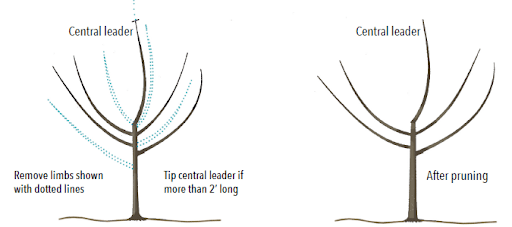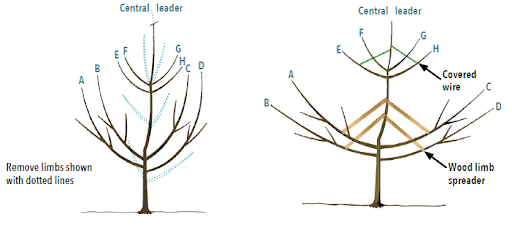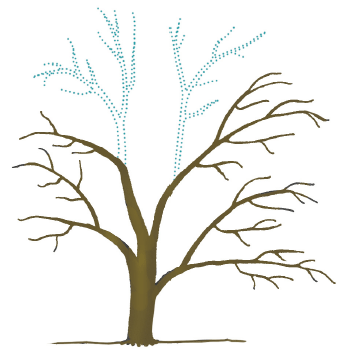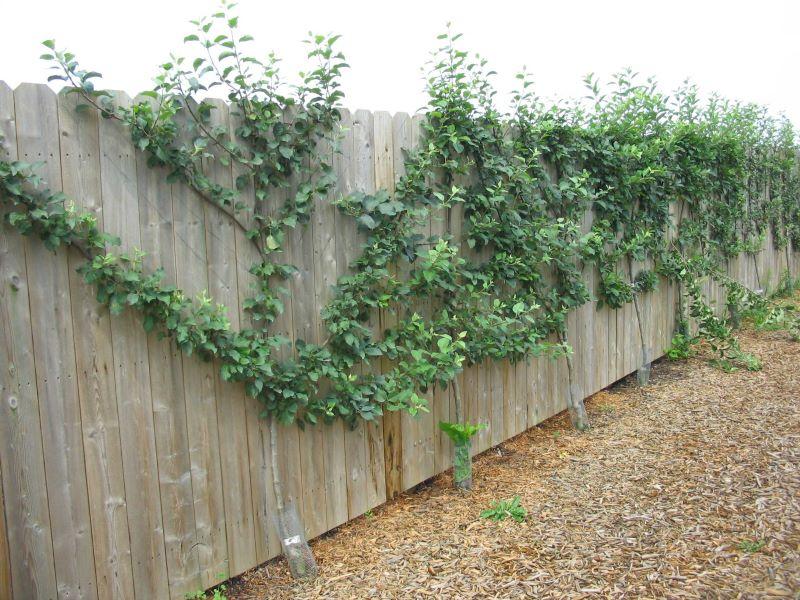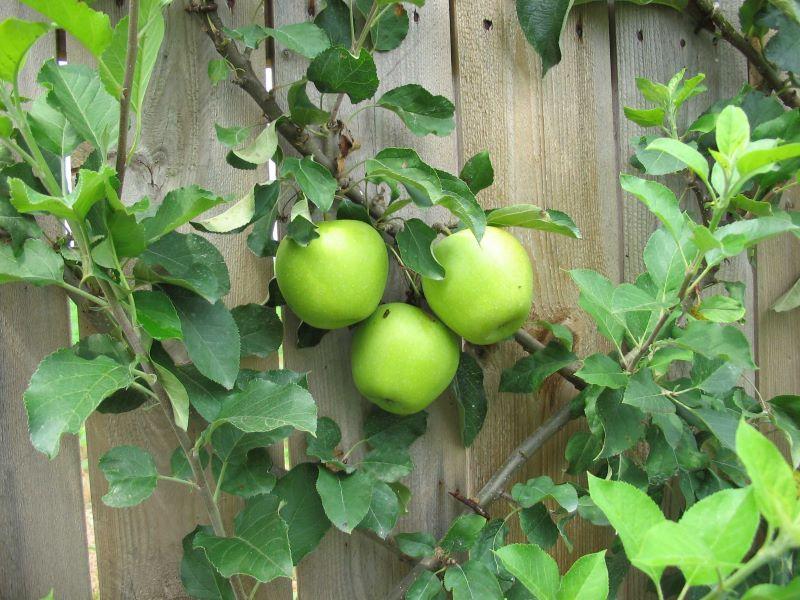Apple trees are vulnerable to many diseases and insect and mite pests. These include fire blight, rust, apple scab, summer rots, sooty blotch and flyspeck, aphids, plum curculio, and codling moth.
See the resources below for detailed pest identification and management information. For pesticide selection and timing, refer to Virginia Cooperative Extension’s Pest Management Guide (select the Home Fruit chapter). UME recommends this guide for Maryland’s home fruit gardeners.
Problems not caused by insects/mites or diseases (environmental causes)
Problems on limbs or trunk
- Frost/freeze cracks and sunscald—cracks usually occur on the south or west side of a tree. They are caused partly by differential freezing and thawing of water in trees. Consider painting the trunks and large scaffold branches of young trees with white latex paint. Late summer or early fall pruning or fertilizing makes trees more vulnerable to frost cracks and sunscald injury.
- Trunk bark/wood is gouged or scarred - lawnmower and string trimmer injury, embedded wires or collars from tree support apparatus. Mulch to within 6 inches of the trunk. If tree support is necessary due to slope, high wind, or type of dwarfing rootstock, be sure to use a soft collar and adjust annually to allow for tree growth.
- Water sprouts/suckers - removal of large branches and limbs causes prolific growth of water sprouts directly below the pruning cut. In all cases, promptly pull or cut all suckers and water sprouts at the point of attachment, unless selecting one to train as a scaffold branch.
- Dark, raised circles on the trunk with rough texture - burr knots caused by the progressive formation of aerial roots. Occurs frequently with some dwarfing rootstocks. Burr knots can weaken a tree structurally if present in large numbers.
- Bulging of the trunk at the graft union- normal on grafted trees where the scion wood and rootstock meet. Remove all suckers that arise below the graft union.
Flower buds or flowers turn brown or drop; failure to fruit
- Winter-kill of buds from extended periods of very cold temperatures. Young trees, flowers, and buds at the ends of branches and facing upwards are more vulnerable. Avoid planting very early blooming cultivars.
- Spring frost/freezes damage buds and flowers and young fruits. Open blooms are more cold-sensitive. Cover espaliered or short-stature trees with tarps or quilts to prevent freeze damage.
- Misuse of dormant oil or pesticide sprays, including spraying when blooms are open or temperatures are below 40°F. Incorrect spraying dormant oil, lime-sulfur, and other fungicides and insecticides may damage buds and blooms. Follow label directions.
- Lack of pollinizer trees - almost all apple and pear cultivars are self-infertile.
- Poor pollination/fertilization - bee activity is low during cool, wet weather.
- Stressful conditions - drought, wind, low temperatures.
- Low light conditions (excessive shade). Follow proper thinning and pruning guidelines. Select planting sites with optimum light exposure.
- Severe pruning will reduce the number of blooms. Do not prune out fruit-bearing wood during the dormant season.
- Biennial bearing pattern due to failure to thin fruit (varies by cultivar).
- Over-use of nitrogen fertilizers before bloom period.
Fruit problems
- Small fruits due to failure to thin fruits or low soil fertility.
- Spots caused by pesticide burn. Captan®, sulfur, and oil sprays may produce russeting on sensitive varieties.
- Hail causes small, roughened areas on fruit. Cosmetic damage.
- Mechanical damage from contact with branches or rough handling.
- Sunscald - white, tan, or brown sunken areas on exposed fruit surfaces. May alter fruit flavor. Remove and discard the affected fruit.
Resources
Pest Management Guide (select the Home Fruit chapter) | Virginia Cooperative Extension
UME recommends this guide for Maryland’s home fruit gardeners.
(PDF) Fire Blight | University of Kentucky
(PDF) Apple Aphids | University of Kentucky
(PDF) Disease Management in Home Apple Plantings | Ohio State University
(PDF) Apple Scab | University of Kentucky
Managing Pests in Home Fruit Plantings | Purdue University
Codling Moth | University of Wisconsin
Fruit Pathology Lab | Ohio State University
Fruit Tree Pests | University of Maine
Pest-Mating Disruption | Northeast IPM Center
Disease and Insect Control Programs for Homegrown Fruit in Kentucky - Including Organic Alternatives | University of Kentucky
Apple Disease - Marssonina Blotch | Penn State University
Growth Stages in Fruit Trees: From Dormant to Fruit Set | Cornell University
Organic Apple Production | University of Vermont

